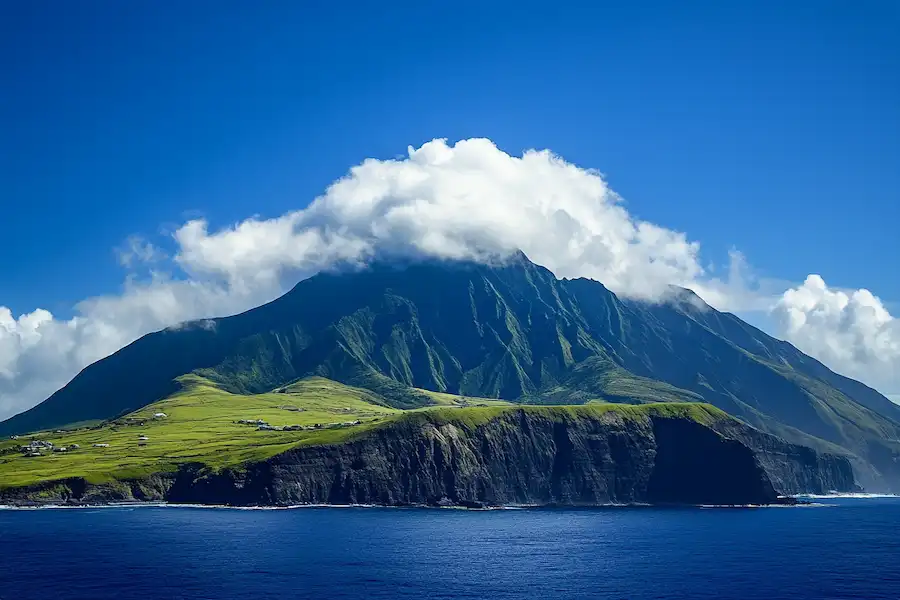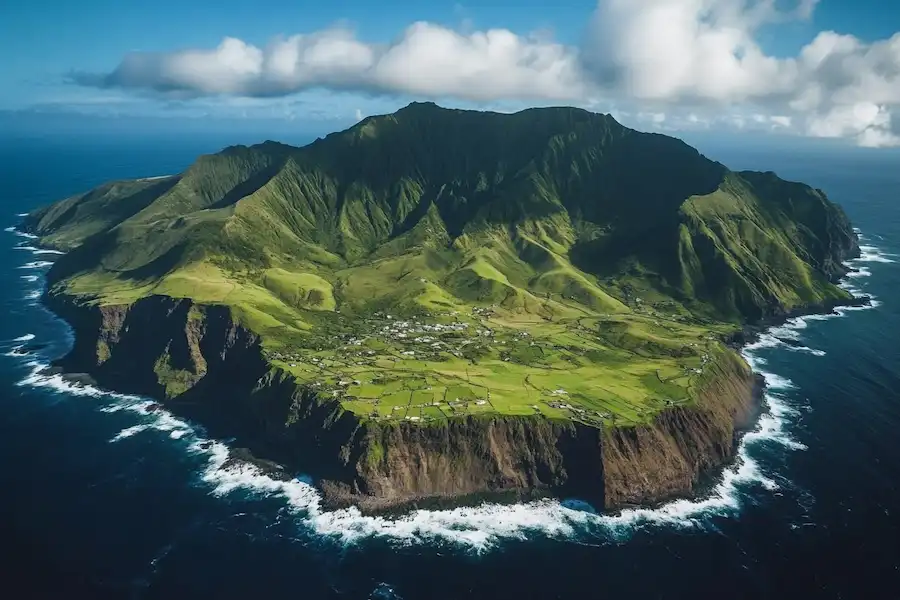Tristan da Cunha: Exploring the World’s Most Isolated Inhabited Island
Tristan da Cunha, a name that evokes images of remote and rugged landscapes, is known as the most isolated inhabited island in the world. Located in the South Atlantic Ocean, over 2,400 kilometers from the nearest continent, this volcanic island is part of a small archipelago that includes several uninhabited islands. Tristan da Cunha is not only a geographical marvel but also a fascinating community with a rich history and unique way of life.
Geography and Natural Environment

Volcanic Origins and Landscape
Tristan da Cunha rises majestically from the ocean as a volcanic island, with Queen Mary’s Peak, an active volcano, as its highest point at 2,062 meters. The rugged terrain is marked by steep cliffs and rocky shores, making access by sea challenging except at a few landing points. The island’s isolation has fostered the development of a unique ecosystem, with numerous endemic species of flora and fauna that are of significant interest to scientists and nature lovers alike.
Climate
The climate of Tristan da Cunha is classified as temperate maritime, with mild temperatures throughout the year. The island experiences frequent rainfall and persistent westerly winds, which help to sustain its lush, green landscapes.
The Community of Tristan da Cunha
Population and Lifestyle
The island has a population of approximately 250 residents, most of whom live in the only settlement, Edinburgh of the Seven Seas. The community is known for its close-knit and resilient nature, with a lifestyle that has adapted to the island’s remote conditions. The economy is primarily based on subsistence farming, fishing, and government-funded jobs.
History and Heritage
Originally discovered in 1506 by Portuguese explorer Tristão da Cunha, the island was later settled by the British in the early 19th century. The islanders, often called Tristanians, have a unique heritage that blends their various ancestral roots, including Dutch, Italian, and American.
Visiting Tristan da Cunha
Accessibility
Reaching Tristan da Cunha is a feat in itself, as there are no airports on the island. Travel involves a lengthy sea voyage from South Africa, typically taking about six days. The infrequency of ships and the need for permits make planning a visit to Tristan da Cunha a meticulous process.
What to Do
For those who make the journey, the island offers unparalleled opportunities for nature walks, bird watching, and fishing. The Tristan da Cunha Museum and the island’s Post Office, which issues its own stamps, are popular attractions that provide insights into the island’s history and culture.
Conservation Efforts
Preserving the Natural Environment
Conservation is a priority for Tristan da Cunha. The community has established measures to protect its unique environment and marine resources, including a Marine Protection Zone. These efforts ensure the sustainability of their way of life and the preservation of the island’s natural beauty.
The Future of Tristan da Cunha
Despite its isolation, Tristan da Cunha faces modern challenges such as climate change and economic sustainability. However, the resilience and ingenuity of its community suggest that Tristanians will continue to thrive on their remote island, maintaining their unique lifestyle while balancing the demands of the modern world.

A Unique Adventure
Visiting Tristan da Cunha offers a rare glimpse into a way of life that has remained largely unchanged for over a century. For the adventurous traveler, it represents one of the last frontiers of exploration, an opportunity to experience true isolation and the profound beauty of nature in one of the most remote locations on Earth.



















